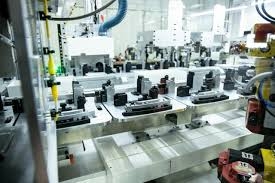
Automated 3D Printing
Efficiency, precision, and creativity of manufacturing processes are now enhanced through the automatic 3D printing transforming the industries. This technology enables smooth production where there is minimal or no human interference by merging the advancements in traditional 3D printing with automation technologies such as robotics, and artificial intelligence (AI).
In its essence, Automated 3D Printing entails layering of materials according to computer designs to create three-dimensional objects. Ability to produce specialized goods with complex geometries using additive manufacturing has made it popular. But many operations related to machine operation, part removal, and post-processing still require manual labour in traditional 3D printing. Most of these labour-intensive processes are diminished by automated 3D printing, thus enhancing efficiency while reducing costs.
One of the key advantages of automated 3D printing is that it can ramp up production without compromising on accuracy and consistency. Production cycles may be shortened through automation that allows for continuous working without the need for human surveillance. To produce high-quality parts within a short period cycle time, automated 3D printing is becoming indispensable in fields like aerospace, automotive, healthcare, and construction.
In addition, AI-infused controlled automated 3D printing technologies can enhance the design and production operations. They can identify and fix defects during manufacture, alter printing parameters in real time, and improve designs for efficiency using machine learning algorithms. Thus, there will be fewer broken components and wastage of materials, and products will be of better quality overall.
Also, mass customization is becoming more achievable due to automated 3D printing. By automating the production of one-off or very personalized products, firms are able to create tailored solutions for customers on an industrial scale. This is especially useful in areas where customization is often vital such as consumer goods, dental devices and medical implants.
Going forward with continued advancements in this technology, automated 3D printing is predicted to have a major influence on industry transformation; innovation and smarter manufacturing systems development. One of the most promising technologies of the modern era, it can completely revolutionize the way things are manufactured from small scale prototypes to large scale production.
As machine learning and computer technology improve more, it is expected that industrial change, innovations and the making of more intelligent and efficient manufacturing methods will be significantly affected by automated 3D printing services. One of its best attributes is this potential to alter production from a small model to mass production

